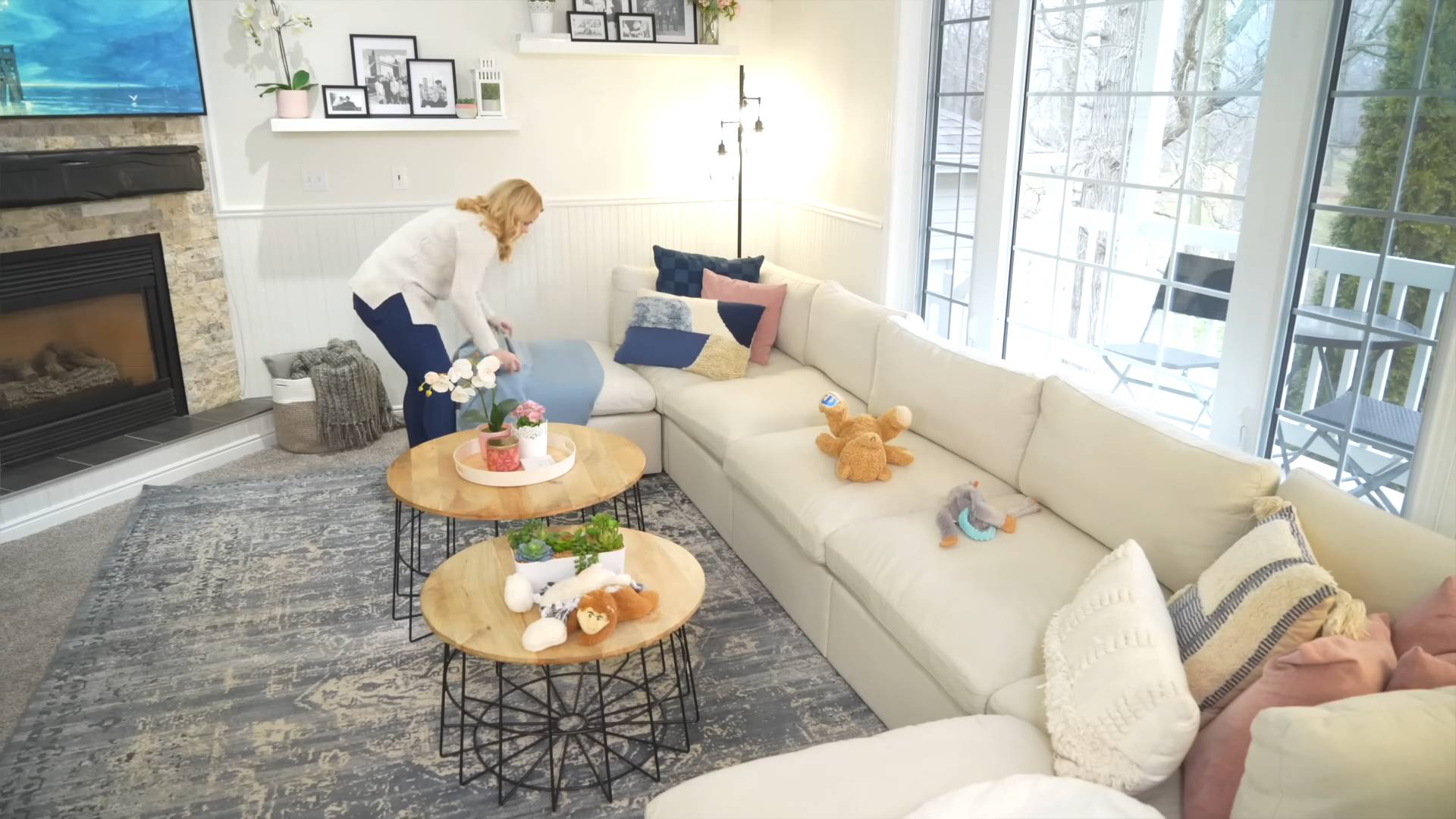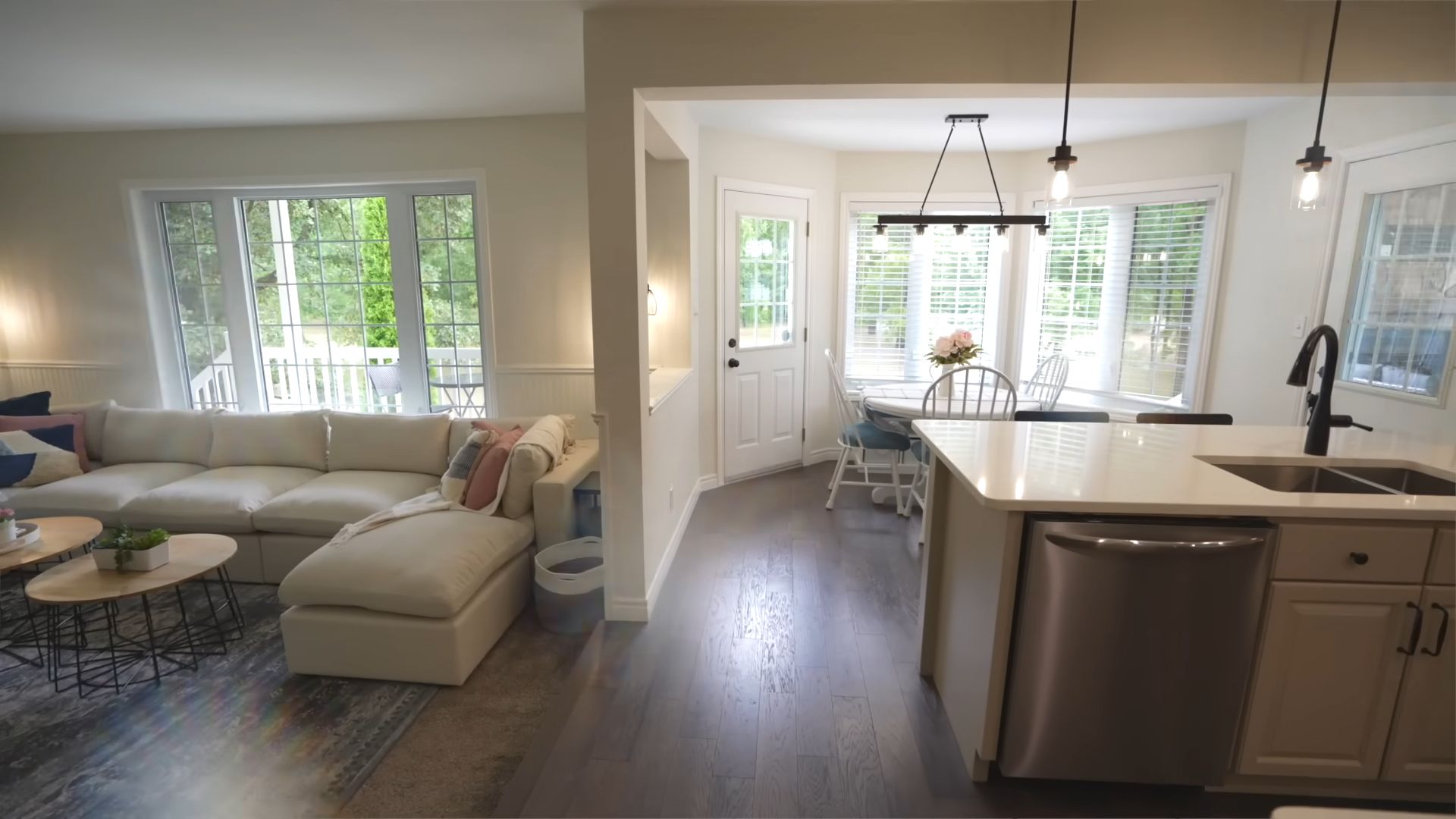Organized home daily habits are the secret weapon to unlocking a stress-free and productive life, and I’m so excited to share some of my favorite DIY tricks with you! Ever feel like your home is constantly in a state of chaos, no matter how much you clean? You’re not alone! Many of us struggle to maintain a tidy and functional living space amidst the demands of work, family, and everything else life throws our way. But what if I told you that just a few simple, daily habits could transform your home from a source of stress into a sanctuary of calm?
The concept of an organized home isn’t new. For centuries, cultures around the world have emphasized the importance of order and cleanliness in creating a harmonious living environment. From the ancient practice of Feng Shui, which seeks to balance energy flow through spatial arrangement, to the minimalist philosophies of modern design, the desire for a clutter-free and well-organized home has been a constant throughout history.
That’s why I’ve put together this collection of easy-to-implement DIY tricks and hacks that will help you establish those crucial organized home daily habits. These aren’t about achieving perfection; they’re about creating sustainable routines that fit seamlessly into your lifestyle. Imagine waking up each morning to a tidy kitchen, knowing exactly where everything is, and feeling a sense of calm wash over you. These simple changes can have a profound impact on your overall well-being, reducing stress, boosting productivity, and freeing up your time to focus on the things that truly matter. So, let’s dive in and discover how to create a home that supports your best life!

DIY Daily Habits for an Organized Home: My Tried-and-True Guide
Okay, friends, let’s be honest. We all dream of a perfectly organized home, the kind you see in magazines. But the reality? Life happens! Kids, pets, work… it all adds up. But don’t despair! I’m here to share my personal collection of daily habits that have transformed my home from chaotic to comfortably organized. These aren’t about perfection; they’re about progress and creating a space that supports your well-being.
The Foundation: Setting Yourself Up for Success
Before we dive into the nitty-gritty, let’s lay some groundwork. These are the mindset shifts and preparatory steps that will make all the difference.
* Embrace the “Less is More” Philosophy: This is HUGE. Before you even *think* about organizing, consider decluttering. The less stuff you have, the less you have to organize. Be ruthless! If you haven’t used it in six months (or a year for seasonal items), it’s probably time to let it go. Donate, sell, or recycle – just get it out of your house.
* Establish a Home for Everything: This is organization 101, but it’s crucial. Every single item in your home should have a designated spot. This makes putting things away SO much easier. Think about it: if you don’t know where something goes, it’s going to end up cluttering a surface.
* Invest in Simple Storage Solutions: You don’t need to spend a fortune on fancy organizers. Simple baskets, bins, and drawer dividers can work wonders. I love using clear containers so I can easily see what’s inside.
* Make it a Family Affair: Get everyone involved! Even young children can learn to put their toys away. Assign age-appropriate tasks and make it a team effort. This not only lightens your load but also teaches valuable life skills.
* Be Realistic: Don’t try to overhaul your entire house in one day. Start small, focus on one area at a time, and celebrate your progress. Rome wasn’t built in a day, and neither is an organized home.
The Daily Habits: My Secret Weapons Against Clutter
These are the habits I’ve incorporated into my daily routine that keep my home looking (and feeling!) its best.
1. The 5-Minute Tidy-Up
This is my absolute favorite! Before I leave a room, I spend just five minutes tidying up. It’s amazing how much you can accomplish in such a short amount of time.
Step-by-Step Instructions:
1. Set a Timer: Grab your phone or a kitchen timer and set it for five minutes.
2. Focus on One Room: Choose the room that needs the most attention.
3. Quick Tasks: Focus on quick wins:
* Put away any stray items (books, toys, clothes).
* Wipe down surfaces (kitchen counters, bathroom sinks).
* Straighten pillows and blankets.
* Empty small trash cans.
4. Don’t Get Distracted: Resist the urge to start a bigger project. Stick to the five-minute rule!
5. Celebrate Your Success: When the timer goes off, stop! You’ve made a difference!
2. Make Your Bed Every Morning
This may seem simple, but it’s incredibly powerful. Making your bed instantly makes your bedroom look more put-together. Plus, it starts your day with a sense of accomplishment.
Step-by-Step Instructions:
1. Pull Up the Sheets: Straighten the bottom sheet and pull it up.
2. Arrange the Top Sheet and Blanket: Smooth out the top sheet and blanket.
3. Fluff the Pillows: Give your pillows a good fluff and arrange them neatly.
4. Add a Decorative Touch (Optional): Throw on a decorative pillow or a folded throw blanket for extra style.
3. One Load of Laundry a Day
Laundry can quickly become overwhelming. Doing one load a day keeps it manageable.
Step-by-Step Instructions:
1. Gather the Laundry: Collect dirty clothes from hampers and bedrooms.
2. Sort the Laundry: Separate clothes by color and fabric type.
3. Wash, Dry, and Fold: Wash, dry, and fold the laundry.
4. Put Away Immediately: This is key! Don’t let the clean laundry sit in a basket. Put it away as soon as possible.
4. Clear the Kitchen Counters After Every Meal
A cluttered kitchen counter can make the whole house feel messy. Clearing the counters after each meal keeps the kitchen looking clean and inviting.
Step-by-Step Instructions:
1. Wash Dishes: Wash or load the dishwasher with dirty dishes.
2. Wipe Down Surfaces: Wipe down the counters, stovetop, and sink.
3. Put Away Food: Store leftovers in the refrigerator and put away any ingredients.
4. Sweep or Vacuum: Quickly sweep or vacuum the floor to remove crumbs and spills.
5. Deal with Mail Immediately
Don’t let mail pile up on your kitchen counter or desk. Deal with it as soon as you bring it in.
Step-by-Step Instructions:
1. Sort the Mail: Separate junk mail from important documents.
2. Recycle Junk Mail: Immediately toss junk mail into the recycling bin.
3. Pay Bills: Pay bills online or write checks and mail them.
4. File Important Documents: File important documents in a designated filing system.
5. Take Action: If any mail requires action (e.g., RSVP to an invitation), take care of it immediately.
6. The “One In, One Out” Rule
This is a great way to prevent clutter from accumulating. For every new item you bring into your home, get rid of one similar item.
Step-by-Step Instructions:
1. Identify the New Item: When you bring a new item into your home (e.g., a new shirt), identify it.
2. Find a Similar Item: Find a similar item that you no longer need or use (e.g., an old shirt).
3. Get Rid of the Old Item: Donate, sell, or recycle the old item.
7. Plan Your Outfits the Night Before
This saves time and stress in the morning and helps you keep your closet organized.
Step-by-Step Instructions:
1. Check the Weather: Check the weather forecast for the next day.
2. Choose Your Outfit: Select your outfit based on the weather and your activities.
3. Lay Out Your Clothes: Lay out your clothes on a chair or hang them in your closet.
4. Gather Accessories: Gather any accessories you’ll need, such as shoes, jewelry, and a bag.
8. Quick Bathroom Clean After Showering
A quick wipe-down after showering prevents soap scum and mildew from building up.
Step-by-Step Instructions:
1. Keep Cleaning Supplies Handy: Store a spray bottle of bathroom cleaner and a squeegee in your shower.
2. Spray and Wipe: After showering, spray the shower walls and door with cleaner.
3. Squeegee the Surfaces: Use the squeegee to remove water from the walls and door.
4. Wipe Down the Sink: Wipe down the sink and faucet with a damp cloth.
9. Empty Trash Cans Regularly
Don’t let trash cans overflow. Empty them regularly to prevent odors and keep your home clean.
Step-by-Step Instructions:
1. Check Trash Cans Daily: Check all trash cans in your home daily.
2. Empty When Full: Empty trash cans when they are full or starting to smell.
3. Replace Liners: Replace the trash can liners with new ones.
4. Clean Trash Cans Periodically: Clean trash cans periodically with soap and water to prevent odors.
10. End-of-Day Reset
Before you go to bed, take a few minutes to reset your home for the next day.
Step-by-Step Instructions:
1. Tidy Up Living Areas: Straighten pillows, fold blankets, and put away any stray items.
2. Clear Kitchen Counters: Make sure the kitchen counters are clear and the sink is empty.
3. Set Out Breakfast (Optional): If you have time, set out breakfast items for the next morning.
4. Prepare for the Next Day: Gather anything you’ll need for the next day, such as your work bag or lunch.
Troubleshooting and Tips
* Don’t

Conclusion
So, there you have it! Transforming your home into an organized haven doesn’t require a complete overhaul or a massive budget. By incorporating these simple, yet powerful, daily habits, you can dramatically improve the functionality and serenity of your living space. This isn’t just about aesthetics; it’s about creating an environment that supports your well-being, reduces stress, and allows you to focus on what truly matters.
The beauty of these habits lies in their adaptability. Feel free to tailor them to your specific needs and lifestyle. For example, if you find the “one-minute rule” too restrictive, extend it to five minutes. If you prefer to tackle clutter in larger chunks, dedicate 15-30 minutes each day to a specific area. The key is to find a system that works for you and that you can realistically maintain over time.
Consider these variations to further personalize your organized home daily habits:
* **Theme Days:** Assign specific tasks to different days of the week. For instance, Mondays could be for laundry, Tuesdays for decluttering paperwork, Wednesdays for cleaning bathrooms, and so on. This can help you stay focused and prevent feeling overwhelmed.
* **Family Involvement:** Make organization a family affair. Assign age-appropriate tasks to each member of the household. This not only lightens your load but also teaches valuable life skills and fosters a sense of shared responsibility.
* **Gamification:** Turn organization into a game. Set timers, create reward systems, or challenge yourself to beat your previous decluttering record. This can make the process more enjoyable and motivating.
* **Mindful Organization:** Approach organization with mindfulness. Pay attention to your belongings, consider their purpose, and let go of items that no longer serve you. This can be a powerful way to declutter not only your home but also your mind.
We understand that establishing new habits takes time and effort. Don’t get discouraged if you miss a day or two. Just pick up where you left off and keep moving forward. The important thing is to be consistent and to celebrate your progress along the way.
We are confident that by implementing these organized home daily habits, you will experience a significant improvement in your home environment and overall quality of life. It’s a small investment of time and energy that yields tremendous returns in terms of reduced stress, increased productivity, and a greater sense of peace and well-being.
Now, we encourage you to put these tips into practice and see the difference they can make. Start small, be patient, and remember that every little bit counts. We would love to hear about your experiences! Share your successes, challenges, and any variations you’ve discovered in the comments below. Let’s create a community of organized home enthusiasts and inspire each other to live more clutter-free and fulfilling lives.
Frequently Asked Questions (FAQ)
Q: How long does it typically take to establish these daily habits?
A: Establishing any new habit takes time and consistency. While the exact timeframe varies from person to person, a general rule of thumb is to allow at least 21 days of consistent practice for a habit to become ingrained. However, some studies suggest it can take anywhere from 18 to 254 days for a new behavior to become automatic. The key is to be patient with yourself, stay committed to the process, and don’t get discouraged if you slip up occasionally. Focus on progress, not perfection.
Q: What if I have a very busy schedule and can’t dedicate much time to organization each day?
A: That’s perfectly understandable! The beauty of these daily habits is that they can be adapted to fit even the busiest schedules. Start with just one or two habits that seem most manageable for you. Even dedicating just 5-10 minutes a day to tidying up or decluttering can make a significant difference over time. The “one-minute rule” is particularly helpful for busy individuals. Remember, consistency is more important than spending large amounts of time sporadically. You can also break down larger tasks into smaller, more manageable chunks that you can tackle throughout the day.
Q: I live with other people who aren’t as organized as I am. How can I encourage them to participate?
A: This can be a common challenge. The best approach is to lead by example and communicate your needs and expectations clearly and respectfully. Start by focusing on shared spaces and explaining how a more organized environment benefits everyone. Involve your family or housemates in the decision-making process and assign age-appropriate tasks to each person. Make it a collaborative effort rather than a dictatorial one. You can also try gamifying the process or offering small rewards for participation. Ultimately, it’s about finding a balance between your own organizational preferences and the needs and habits of others.
Q: What if I have a lot of clutter and don’t know where to start?
A: Feeling overwhelmed by clutter is a common experience. The key is to break down the task into smaller, more manageable steps. Start with one small area, such as a drawer, a shelf, or a corner of a room. Focus on decluttering that one area completely before moving on to the next. Use the four-box method (keep, donate, sell, trash) to help you make decisions about what to keep and what to get rid of. Don’t be afraid to ask for help from a friend, family member, or professional organizer. Remember, it’s a process, and it’s okay to take it one step at a time.
Q: How do I maintain these habits once I’ve established them?
A: Maintaining these habits requires ongoing effort and awareness. The key is to make them a part of your daily routine and to be proactive in preventing clutter from accumulating. Regularly review your organizational systems and make adjustments as needed. Continue to declutter regularly and to put things back in their designated places. Be mindful of your consumption habits and avoid bringing unnecessary items into your home. And most importantly, be patient with yourself and celebrate your successes along the way. Remember, maintaining an organized home is an ongoing journey, not a destination.
Q: What are some good resources for learning more about organization and decluttering?
A: There are many excellent resources available to help you learn more about organization and decluttering. Consider exploring books, websites, blogs, and podcasts on the topic. Some popular authors and experts in the field include Marie Kondo, Peter Walsh, and Gretchen Rubin. You can also find helpful tips and inspiration on social media platforms like Pinterest and Instagram. Additionally, consider attending workshops or seminars on organization and decluttering, or hiring a professional organizer to provide personalized guidance and support.
Q: Can these organized home daily habits help with my mental health?
A: Absolutely! A cluttered and disorganized home can contribute to feelings of stress, anxiety, and overwhelm. By creating a more organized and peaceful living environment, you can reduce these negative emotions and improve your overall mental well-being. An organized space can promote a sense of calm, control, and clarity, allowing you to focus on what truly matters. Furthermore, the act of decluttering can be a therapeutic process, helping you to let go of emotional baggage and create space for new possibilities.





Leave a Comment